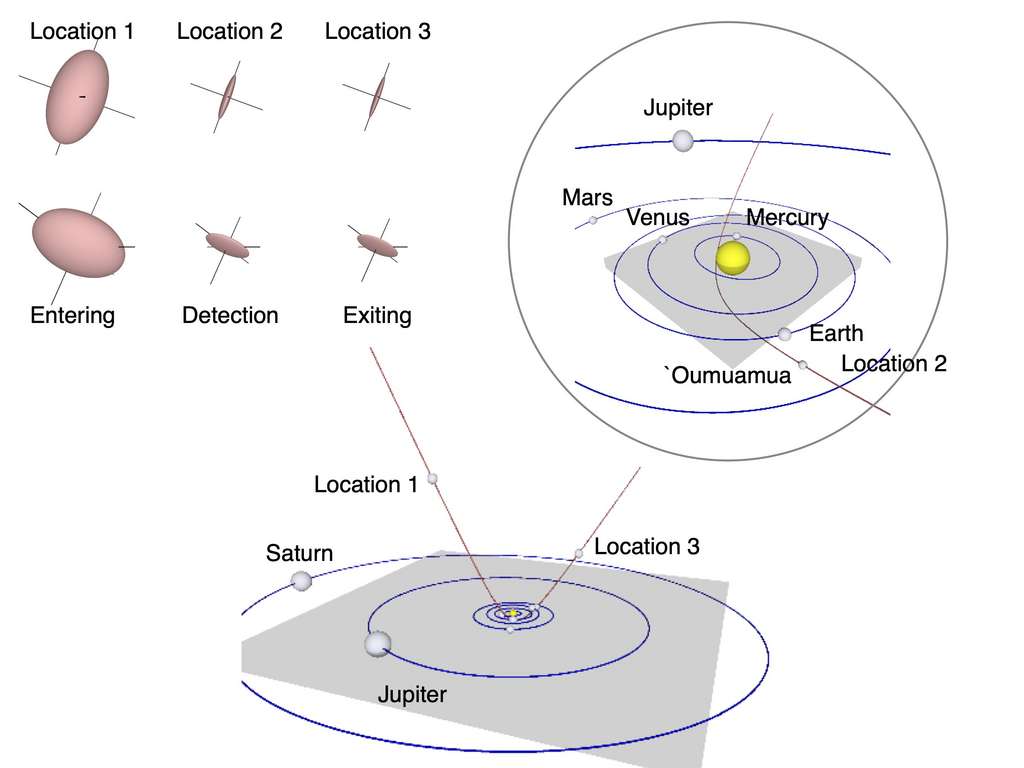Since its discovery in 2017, 1I / ʻOumuamua has cultivated the mystery around its nature and its origins. A new study suggests that the interstellar object is made up largely of dihydrogen ice. According to this hypothesis, ʻOumuamua would have formed in a giant molecular cloud.
1I / ʻOumuamua was discovered on October 19, 2017 by the Pan-Starrs program and was initially classified as a comet due to its trajectory quickly identified as hyperbolic. However, the absence of cometary activity observed – neither hair nor tail – led to his prompt reclassification among the minor planets ( asteroids and similar) before he inaugurated the newly established list of interstellar objects.
Despite the absence of observed activity, astrometric measurements showed that ʻOumuamua underwent a non-gravitational acceleration on its exit path from the Solar System . Such acceleration is usually observed when matter escapes from a comet, which pushes the nucleus through an action-reaction effect. However, the data show that the acceleration of ʻOumuamua is incompatible with a jet caused by sublimation of water ice as can be observed for comets in the Solar System.
A visitor made of hydrogen ice
In a new study accepted for publication in the Astrophysical Journal Letters (available in prepublication on arXiv ), Darryl Seligman, a postdoctoral researcher in the geophysics department of the University of Chicago, and Gregory Laughlin, a professor in the department of astronomy of the university Yale, propose that ʻOumuamua contained a significant fraction of dihydrogen ice (H 2 ).
According to them, this could explain all the observed properties of ʻOumuamua. Sublimation of dihydrogen at a rate proportional to the incident solar flux produces a jet covering the surface which reproduces the observed acceleration. Mass loss by sublimation leads to a monotonous increase in the ratio between the axes of the body, explaining the form of ʻOumuamua. Tracing the trajectory of’Oumuamua through the solar system to calculate its mass and report form before meeting Sun.
Seligman and Laughlin show that dihydrogen-rich bodies can form in the coldest dense nuclei of giant molecular clouds, where densities are in the order of one hundred thousand to one million molecules per cubic centimeter and temperatures approach 3 Kelvin (-270 ° C) from the cosmic microwave background. For comparison, one cubic centimeter of air under the usual conditions (20 ° C and 1 bar ) contains around 250 billion molecules.
Researchers explain that exposure to galactic cosmic rays after the formation of ʻOumuamua implies an age of around 100 million years.
